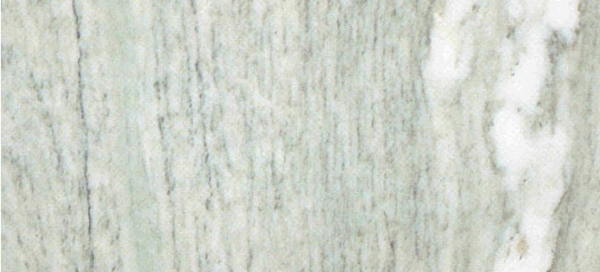In the international panorama of countries extracting and processing stone, Italy occupies a very relevant position. A region which has always linked its name to the beauty and variety of excavated stone is Tuscany, a place from which come some of the most appreciated marbles, such as Cipollini, extracted in the Apuan Alps and in Garfagnana, with deposits quite limited in extension and production.
The Cipollini belong to the group of marbles listed or at strips, i.e., with a crystalline structure constituted by a homogenous background, in general of fine grain and of colours that go from white to colour wax and greyish, they present veins or bands, of green or greenish tones, parallel among themselves and with rectilinear and curvy direction. This structure is formed of iron, chlorite, coloured mica which gives it an aspect very similar to that of the layers of an onion, from there comes its name. Apart from the veins, these marbles contain chert nodules of several colours, very resistant to abrasive action of the atmospheric agents.
From the geological point of view, the Cipollini marbles originated through the formation of calcareous polychromes (grey, pink, green), rich in chert nodules with interlaced clay. The calcareous sediments are enclosed in a tectonic and metamorphic procedure that makes them to fold and transform repeatedly, originating in this way the marbles with typical waved veins.
Different types of Cipollini marbles
The Cipollini group has different commercial varieties that distinguish between themselves by colour or design that shows the veins; in all cases, they refer to materials with a big aesthetic impact, highly appreciated and used in past epochs. Among the most notable varieties, some of which are no longer produced in our days, one must mention:
Cipollino in the "strict sense" or Apuan Green Cipollino: extracted in the Apuan area, it is the most classical material of this group. It has a white background furrowed by parallel veins more or less waved, of colour that varies from light green to dark green of variable width.
Apuan Green Cipollino

Cipollino of Versilia or Green Italian Cipollino: it is a crystalline marble with mass of background that goes from white to very light green, the dark green veins are more subtle and waved than the other Cipollini. The chromatic contrast between the background mass and the strips of colour is less accentuated. It was found in the province of Lucca.
Fantastic Ami Cipollino: the white background presents some subtle green grooves typically waved and a slight shade of yellowish gold shade. It is extracted in Upper Versilia in very limited quantities.
Cipollino '900 or Zebrino: proceeds from a quarry of Carrara, it has veins which are more or less dense of white crystalline marble that alternate, in more or less parallel direction, with more soft lines of green colour with a tendency towards brown; this chromatic alternating is very similar to the stripes of the zebra, from where the rock derives its name. Now and then the background mass can be of a golden yellow shade instead of black. The colouring is due to the presence of ferrous and ferric iron, of chlorite and coloured mica; the chromatic intensity can vary according the oxidation grade of the minerals present.
Cipollino ´900 or Zebrino

Along with the main types of stones explained above, there are others of undoubted aesthetic value:
- Cipollini Rosso Luana: it is a compact material of colour brown-pink and green, extracted in Garfagnana.
- Cipollino Viola Isola Santa: the greenish background is furrowed by parallel strips of violet coloured shade. It is extracted between Versilia and Garfagnana.
- Cipollino Garagnana: extracted in the province of Lucca, has a pea green shade and a typically white spots.
Applications
The Cipollini marbles are used in interior decoration for floors, cladding, bathrooms and kitchens, and also in exteriors for wall cladding of the buildings. Moreover, they are used in the form of architectonic elements such as columns, tables and objects of decoration in general.
Being a material with veins, the Cipollini can be cut "with-the-bed cut" or "across-the-bed cut" respect to the direction of the grooves. The cut "across-the-bed", very common, is done perpendicular to the direction of development of the vein and confers to the material its typical aspect, given the more or less regular alternation of the coloured lists, parallel between them, with the background mass of colour white.
With the cut "with-the-bed cut", more or less parallel to the development of the vein, the material presents a cloudy aspect, with spots, in which the minerals that constitute the veins create coloured zones surrounded to the white portion of the background.
The type of cut depends exclusively on the aesthetic effect that one wishes to obtain of the block or slab.
Among the techniques of elaboration that most highlight the beauty of Cipollini stands out the honing, procedure with which we obtain a material with a surface perfectly clean and plain; with the polishing, on the other hand, one obtains a marble that reflects light as a mirror.
A technique of elaboration introduced recently is that of brushing, by means of which the material acquires an "antique" or aged aspect. The marble is elaborated by means of appropriate brushes that scrape the softest part while that, which is harder, like the chert nodules, is put in relief. The result is an irregular surface that reminds one of a stone that has been exposed to the erosion of the atmospheric agents.
